Ten years ago, we couldn't have imagined how tools like machine learning, eDNA, and satellites would advance and transform conservation work. Now technology is advancing faster than ever, and as tools become smaller, lighter, and more affordable, it's vital to have a space where community members can discuss the next big thing, share ideas, compare tool options, and tell the story of their experiences - positive, negative, and anything in between - while using new technologies.
In 2021, the WILDLABS State of Conservation Tech report detailed what tools show the most promise according to community members, as well as what tools are currently seen as the most effective. And as new tools enter the field, we're excited to see how this data will change over time, and how this group grows over time as well.
Our State of Conservation Tech research also discusses something called the "Hype Cycle" - the pattern that occurs when a new technology bursts onto the scene, promises to be an exciting solution, encounters challenges as new users adopt the tool and put it into practice beyond just theory, and eventually settles into its most effective state as users acquire the right skills to use it to its actual potential. Machine learning, one of the most promising technologies, is currently in the middle of its own hype cycle, and we see community members working through their own hurdles to incorporate ML into their work effectively. Despite what you may think, this Hype Cycle can also be positive for tech development, as it means that users have big ideas for new tools, and with the right resources and skills, they can work toward bringing those ideas to life. And as our community members experiences the Hype Cycle for various tools at their own paces, we hope this group will also serve as a place to discuss that process and overcome hurdles together.
Ready to discover new possibilities? Join our Emerging Tech group now and get to know your forward-thinking conservation tech peers!
Header photo: Internet of Elephants
No showcases have been added to this group yet.
- @Arjun_Viswa
- | S
- 0 Resources
- 0 Discussions
- 26 Groups
- 0 Resources
- 0 Discussions
- 12 Groups
- 0 Resources
- 0 Discussions
- 18 Groups
- @frides238
- | She/her
Hi! I am Frida Ruiz, with a bachelor's in Mechanical Engineering and very interested in habitat restoration & conservation. I am excited to connect with others and learn about technology applications within applied ecology & potential research opportunities

- 0 Resources
- 5 Discussions
- 13 Groups
Conservationist | Ecologist| Geospatial Scientist
- 0 Resources
- 1 Discussions
- 12 Groups
Movement ecologist using conservation technology to study the behaviors of animals in the wild to understand how they cope with change and most effectively address conservation- and conflict-related issues.


- 0 Resources
- 10 Discussions
- 11 Groups
- @MandyEyrich
- | She/Her
University of Florida (UF)
Bridging industries with 15+ years of cross-sector expertise specializing in user-centric technology and product strategy, UX research, UX/UI design, process optimization, and end-to-end agile product development moving from ideation to iteration.
- 0 Resources
- 0 Discussions
- 26 Groups
- @santhosh
- | he/him/his
Leads Technology for Conservation programme at The Habitats Trust
- 0 Resources
- 3 Discussions
- 10 Groups
- @luciegallegos
- | she/her
Natural Solutions
As an agronomist engineer, I specialized in environmental management and resource conservation. 🌍 Interested in developing solutions for biodiversity conservation #indicators #monitoring
- 0 Resources
- 6 Discussions
- 10 Groups
Sustainability Manager for CERES Tag LTD. An animal health company; animal monitoring, conservation, & anti-poaching/ rural crime. Wildlife, livestock, equine & companion. #CeresTrace #CeresWild #CeresRanch





- 2 Resources
- 20 Discussions
- 23 Groups
- @FiPatterson
- | She/Her
National Scientific and Technical Research Council of Argentina (CONICET)
PhD student from Argentina researching how small desert rodents navigate extreme climatic conditions in the current context of climate change. My research focuses on ecophysiology (i.e. field respirometry) and ethology (i.e. telemetry, accelerometry)
- 0 Resources
- 1 Discussions
- 5 Groups
- @serena.le
- | she/her
Conservation tech enthusiast
- 0 Resources
- 0 Discussions
- 24 Groups
Apply now for $2,500–$15,000 USD grants for early-stage ideas or projects that address global challenges.
4 October 2022
'The low-power camera uses power from harvested acoustic energy and communicates colour images wirelessly via acoustic backscatter.' - https://twitter.com/NaturePortfolio/status/1574863768714100738?s=20&t=...
29 September 2022
This paper released by the World Economic Forum and the SPACES coalition shows how businesses can embrace the use of spatial intelligence for action on nature and climate. How can we make sure businesses apply the...
23 September 2022
This role will be employed under Osa Conservation's Movement Ecology Program. Broadly, the project aims to develop and use novel animal tracking technology to increase our understanding of the movement ecology of...
22 September 2022
Link
Listen to Tanya Berger-Wolf's conversation about AI for Wildlife Conservation and imageomics with Lauren Burke on the Women In Analytics After Hours Podcast.
21 September 2022
Explore BOEM data, build analytic tools, and recommend solutions for sea turtle relocation trawling approaches to reduce incidental risk. Prize: $40,000
21 September 2022
From an invasive reptile trapping system to a nucleic acid barcode that identifies poached and trafficked wildlife products anywhere in the world, the U.S. Fish and Wildlife Service’s Theodore Roosevelt (TR) Genius...
21 September 2022
Amazon Sustainability is welcoming proposals related to climate risk/resilience, life cycle assessment, circular strategies, and more. Selected PIs receive unrestricted funds, no more than $80,000 USD on average
20 September 2022
This technology was recently tested in Kauai, Hawaii, with the National Tropical Botanical Garden and has successfully collected from 5 critically endangered species that were otherwise inaccessible.
16 September 2022
Careers
This Senior-Level (SL) position is located in the Office of Research and Development (ORD), Office of Science Advisor, Policy and Engagement (OSAPE). The location will be determined after a selection has been made...
14 September 2022
Article
APPLY NOW! The Sovereign Nature Initiative has partnered with the Kenya Wildlife Trust to experiment with emerging technologies to support their predators' conservation work.Challenges will focus on:1. Lion...
30 August 2022
Boost cons tech capacity at an international NGO! Fauna & Flora International is offering a paid three-month internship to consolidate and share best practices for the application of emerging hardware and software...
26 August 2022
August 2025
event
September 2025
event
event
March 2026
June 2025
event
event
| Description | Activity | Replies | Groups | Updated |
|---|---|---|---|---|
| I'd be ecstatic if a nest box or natural tree hollow (or burrow) monitoring device could be developed. Infrared images/video and sound recording, either triggered by motion... |
+1
|
Emerging Tech | 2 years 10 months ago | |
| Thanks so much!! |
|
Acoustics, AI for Conservation, Animal Movement, Camera Traps, Community Base, Data management and processing tools, Drones, eDNA & Genomics, Emerging Tech, Open Source Solutions, Geospatial, Software Development | 2 years 10 months ago | |
| I don't think KEH would influence accelerometry at all.One other way to think about it is - the KEH is a movement sensor itself.The GPS is quite a severe factor in the energy... |
|
Animal Movement, Emerging Tech, Sensors | 2 years 11 months ago | |
| Any results coming out of this survey that you would like to share? |
|
Community Base, Emerging Tech | 3 years ago | |
| We’re so excited to see what comes of the growing discussions on sustainability started throughout our community. As the WILD... |
|
Emerging Tech | 3 years 1 month ago | |
| Some folks doing work in this space - Wildlife Drones, Conservation Drones, UAV Wild, AfricanDrones, Oceans Unmanned, Geonadir. |
|
Drones, AI for Conservation, Citizen Science, eDNA & Genomics, Emerging Tech | 3 years 1 month ago | |
| Dear Community,Together with Hackster.io, Seeed Studio is very happy to jointly organize “IoT Into the Wild Contest for Sustainable Plant... |
|
AI for Conservation, Connectivity, Emerging Tech, Open Source Solutions, Sensors | 3 years 2 months ago | |
| A bit opposite of what you're looking for but according to this, the share of non-NFC enabled phones was 10% in 2020. They don't state their source unless you pay, but I suspect... |
|
Animal Movement, Emerging Tech | 3 years 2 months ago | |
| Job description WPS seeks a game developer to work with our videography team and existing library of wildlife 360 video content to... |
|
Emerging Tech | 3 years 6 months ago | |
| That's pretty cool Can you send us the info at contact@natural-solutions.eu happy to help |
|
Emerging Tech | 4 years 1 month ago | |
| Dear Zoe, I wonder whether FIT would be good for species-level (rather than individual level) identification of small mammals. We use track tunnels to get prints of dormice (3... |
|
AI for Conservation, Emerging Tech | 4 years 9 months ago | |
| I only know Internet of Elephants! Have you heard about them? I think their new competitor is Google, have you seen? https://9to5google.com/2020/07/10/google-3d-animals-list... |
|
Emerging Tech | 5 years ago |
Underwater wireless communication
9 December 2024 1:32pm
17 December 2024 1:50pm
To give you the best advice, I need a bit more information about your specific application. Underwater communication typically relies on acoustic modems because radio waves don't travel well through water. For longer distances, a hybrid solution is often used. This could involve an acoustic modem transmitting data from your underwater sensor to a surface buoy or platform. The buoy could then relay the data to shore using traditional radio communication, such as 900MHz radios (even commercially available options like Ubiquiti radios, depending on distance and line-of-sight). To help me understand your needs and recommend the right approach, could you tell me more about:
Data Rate Requirements: How much data do you need to transmit, and how often?
Range: What is the vertical distance between your sensor and the surface receiver?
Environment: Are you working in shallow or deep water? What is the water temperature, salinity, and expected noise level?
Power Budget: How much power is available for the underwater sensor and modem?
Cost: What is your budget for the acoustic modem system?
Integration: How will you integrate the modem with your sensor and surface receiving system?
Real-time or Delayed: Do you need the data in real-time, or can it be stored and transmitted later?
18 December 2024 11:56am
Steve and I are looking to develop a low-cost benthic drift camera with a live video feed. Our hope is to use an acoustic modem to give us a low quality feed for navigation / hazard avoidance. This could be as simple as a small black and white image refreshed every 1 sec. What we need to know from the system is are we at the bottom? and are we about to hit an obstacle?
Data Rate Requirements: A very low quality (360p) video stream - could be black & white and low fps to reduce bit rate requirements (hopefully 1kbps)
Range: At least depth 500m but ideally down to 2,000m (deployed below a vessel from a tether)
Environment: Deep water temperature range down to 0C. Open ocean salinity levels (33-35 psu). Limited noise apart from deployment vessel (engine & echosounder)
Power Budget: Transmitter must be powered by a battery capable of continuous working for at least 1 hour.
Cost: Ideally under £1000 (GBP) for the transmitter & receiver.
Integration: Don't know. We are hoping to plug into an arduino or equivalent.
Real-time or Delayed: We need real time transmission with very limited lag for slow moving obstacle avoidance.
It's a big ask, but any pointers would be very welcome
Conservation Data Strategist?
20 November 2024 3:50pm
22 November 2024 2:28pm
Great resources being shared! Darwin Core is a commonly used bio-data standard as well.
For bioacoustic data, there are some metadata standards (GUANO is used by pretty much all the terrestrial ARU manufacturers). Some use Tethys as well.
Recordings are typically recorded as .WAV files but many store them as .flac (a type of lossless compression) to save on space.
For ethics, usually acoustic data platforms with a public-facing component (e.g., Arbimon, WildTrax, etc.) will mask presence/absence geographical data for species listed on the IUCN RedList, CITES, etc. so that you're not giving away geographical information on where a species is to someone who would use it to go hunt them for example.
29 November 2024 12:13pm
Hello, I am experienced in conservation data strategy. If you want to have a conversation you can reach me at SustainNorth@gmail.com.
29 November 2024 5:51pm
Bird Monitoring Data Exchange is a standard often used for birds data.
Mass Detection of Wildlife Snares Using Airborne Synthetic Radar
7 January 2024 6:50am
26 August 2024 1:14pm
Is thisvfunding grant an opportunity? https://www.dronedeploy.com/blog/expand-your-impact-with-a-grant-from-dronedeploy
24 October 2024 1:39am
Hi David, this is an incredible project. Would you be interested in sharing more of your experience with AI and wildlife conservation with my students? They are currently researching this, and would greatly benefit from speaking with a professional in the field. Thank you for considering!
21 November 2024 4:52pm
Hats off to your team for this absolute game-changing technology!
We rescue stray and wild animals in Taiwan, and the bulk of our work is saving animals maimed by wire snares and gin traps. We've become better at finding the devices, but still not good at all. There's simply too much difficult terrain to cover and we only have eyeballs and hiking sticks to find them. We know roughly where they are because the maimed stray dogs will eventually find their way onto a road and be reported to us. Then we close one of them, set up a trail camera, get the evidence of the poacher in the act of re-setting it, and get him prosecuted and shut down. But we need to be able to scale this greatly.
I've been using a thermal-imaging drone to locate stricken animals and am now considering buying another drone more suited to finding traps and snares. Some newer drones are able to navigate through forest without crashing into thin branches, so I've been looking into equipping one with LiDAR to see if that can detect the devices. But then I came across your YouTube channel and then this post about using airborne synthetic radar, and I'm incredibly excited to see where you might take this incredible technology.
How can we get our hands on the SAR you're using? It's 3 kg, right? I'm wondering if I could fit it to a suitable drone. If it works above forest canopy to detect traps and snares on the forest floor, then I can use a load-carrying drone instead of a light obstacle-avoidance drone.
If you made the SAR yourselves, then maybe think about crowdfunding for your project. I'd happily pledge funds if it meant I could get my hands on the kind of equipment you're using.
I can't tell you how happy I am thinking about all the animals' lives you'll save with this. Don't just remove the snares—gather evidence and put the poachers out of business too!
Podcast: The Role of Remote Sensing in Forestry with Ed Mitchard, Founder at Space Intelligence
1 November 2024 6:16am
Podcast: The State of Nature Tech with Gilad Goren
1 November 2024 6:13am
Can wireless charging technology be used for animal sensors?
17 October 2024 7:03am
23 October 2024 3:43pm
The results in the paper you mentioned are really exciting technology. It can really do a lot of things.
Thanks for your reply!
23 October 2024 4:00pm
Although this technology may not be mature now, and there are still many problems to be discussed and solved, I think it will have good application prospects.
Unfortunately, I am just an undergraduate student in China, and what I can do is very limited. Maybe in the future I can also do some similar research or what I want to do. Just like you, I am studying hard now.
Thank you very much for this forum and the professionals who responded to me. You have allowed me to see more perspectives and many things I didn't realize. Thank you very much!
28 October 2024 3:13pm
No problem at all Yu (@JY) and good luck with your studies! Happy to discuss this and any other ideas any time.
All the best,
Rob
What then has to be the nature of how we relate to things
21 October 2024 8:38am
Resources wanted to advise on the business model of an emerging low-cost device
27 September 2024 5:32am
13 October 2024 11:13pm
Dear @jared ,
Thank you so much for your answer. We have been focusing very deeply into the technology part of the challenge and not yet on the legal issues or product lifecycle. Definitely a lot of food for thoughts there.... thanks!
13 October 2024 11:13pm
Dear @jared ,
Thank you so much for your answer. We have been focusing very deeply into the technology part of the challenge and not yet on the legal issues or product lifecycle. Definitely a lot of food for thoughts there.... thanks!
14 October 2024 3:36am
Jared's answer is excellent IMHO. One level down, you have a couple of options. One is to charge for the convenience of buying a finished, assembled, and tested product, that's for the folks that have money and no time. Those that have time but no money can build it themselves from the open source. One danger to this approach is if low cost chinese clones come on the market, whether they do probably depends a lot on the size of the market.
Another option is to withhold some 'pro/plus' feature from the open source, that depends on whether you can identify such features. A similar option is to offer features that big outfits with good funding need. For example, you could offer calibrated versions at a premium, if that's applicable and needed by such organizations. In many cases companies sell devices cheap that are usable by someone who one has one or a couple and then charge for a management system for those that have dozens or hundreds of devices, dunno whether this applies to your case. All this comes down to whether you can segment your customer base so you can create premium features for the wealthy segment.
MS and PhD Opportunities in Ocean Engineering and Oceanography
6 October 2024 9:44am
Conservation tech in Human Wildlife Conflict
12 September 2024 1:50pm
23 September 2024 10:34pm
Thank you so much Brett.
I am not familiar with some of these tools such as critter alarm but I did search a little about it and it looks very interesting, I will look more on it's effectiveness on Elephants and Hyenas.
25 September 2024 4:51am
The beehive method is neat! Will have to read up on that.
25 September 2024 4:56am
Odor based methods would be interesting. Provided they didn't need to be replenished too often.
We find varied stimulus prevents habituation.
Design-led innovation for nature
20 September 2024 2:24pm
CORDAP opens call for innovative projects (<$1.5M) on coral conservation and restoration
26 August 2024 6:01pm
WILDLABS Virtual Meetup: Bioacoustics Policy Integration and Scientific Impact
22 August 2024 7:57pm
WILDLABS Virtual Meetup: Bioacoustics Data Analysis and AI
22 August 2024 7:22pm
WILDLABS Virtual Meetups Season Five: Listen to the Future
22 August 2024 5:59pm
WILDLABS Virtual Meetup: Bioacoustics Data Networks and Platforms
22 August 2024 5:45pm
WILDLABS Virtual Meetup: Bioacoustics Hardware Innovation
22 August 2024 5:25pm
Community Choice Award Winners: 2024 #Tech4Wildlife Photo Challenge
15 August 2024 2:41am
Cast your vote in the #Tech4Wildlife Photo Challenge Community Choice Awards!
12 August 2024 1:46pm
12 August 2024 9:15pm
13 August 2024 11:26am
AI Based Animal Detection Demo App for iPhone
11 August 2024 9:49pm
Listen to the Future: A Bioacoustics Horizon Scan
5 August 2024 7:11pm
6 August 2024 3:38pm
7 August 2024 12:52pm
21 August 2024 3:41pm
ChatGPT for conservation
16 January 2023 10:04am
17 July 2024 3:23pm
Hi, I've been using ChatGPT for quick labeling of camera trap recordings. I just posted this as a separate discussion here:
31 July 2024 6:40pm
Interesting!!
5 August 2024 6:38pm
I found this interesting
Measuring Carbon Foot Prints
2 August 2024 11:53am
3 August 2024 3:38pm
Hello Adventina!
I am not expert on this field but I happened to learn that measuring carbon footprints can range from simple to complex, depending on the scope and precision required. For individuals looking for an easy yet efficient method, I will suggest Carbon Footprint Calculator. This tool allows users to calculate their carbon footprint by inputting data related to household energy use, transportation, waste, and more.
4 August 2024 7:01pm
Getting to you.
Rapid Camera Trap labeling with ChatGPT
17 July 2024 3:19pm
20 July 2024 3:28pm
super interesting, thank you for sharing! definitely will watch!
31 July 2024 6:38pm
Very interesting!!
3 August 2024 7:46pm
Really interesting, I will take a look
AI accelerator for nonprofits working in the Climate area
31 July 2024 3:01pm
31 July 2024 6:24pm
Great acomplishment!!!
1 August 2024 1:39pm
Thank you so much! Now everything is in the hands of amazing organizations and companies! But the first results of the Disaster Management cohort are bringing a very optimistic vision! :) I hope for the same in the Climate cohort!
Move BON Development: Follow up discussion
19 June 2024 12:02pm
11 July 2024 10:14pm
You can catch up on the recording at that same link to the June Variety Hour! Lacey's fabulous talk starts around the 9:40 mark :)
12 July 2024 5:38am
Hi Talia!
I feel like the topic is so broad that it might help to put some constraints around things, see what works, and then broaden those out. I have a lot of ideas regarding the data monitoring and collection side based on the other sensor and observation networks we've set up in the past.
There may also be some potential scope to incorporate things like data collection and integrated monitoring to the Build Your Own Datalogger series where the system is updated to feed data into the observation network.
It'd probably take a bit of discussion and coordination. Let me know if interested. I'm fine to jump on a call or discuss via email too.
22 July 2024 9:24pm
@cmwainaina please take a look



















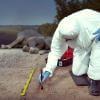






















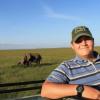









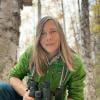




















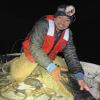


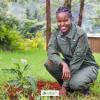
16 December 2024 6:59pm
It's probably much easier to find a company selling acoustic modems than to try and create your own...very challenging environment to work within. I have about 10 years working with underwater acoustics (as a non-engineer).